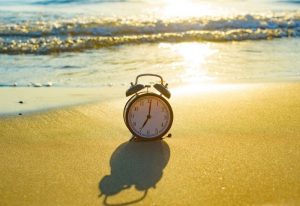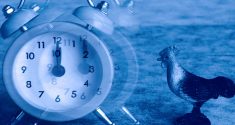A new study conducted by University of Michigan researchers confirms that Daylight Saving Time affects night owls more than it does early birds. Published in Scientific Reports, the study results revealed significant differences in the impact the time shift has on different chronotypes, such as the classic early bird or lark and the night owl.
Researchers suggest a genetic connection to this differing impact because chronotype has been shown to have a genetic link. Because of how it can impact sleep quality and the circadian rhythm, some experts believe that Daylight Saving Time can have an adverse impact on health in general.
Understanding Chronotypes
 Chronotype refers to a person’s preferred times for waking, sleeping and activity. Some people prefer to be early risers, are at their most active earlier in the day and tend to go to bed relatively early. These people are classically referred to as early birds or larks. Night owls, on the other hand, are not fans of early morning rising and prefer to sleep a bit later. Their peak activity period falls later in the day and they also seem to naturally prefer a later bedtime.
Chronotype refers to a person’s preferred times for waking, sleeping and activity. Some people prefer to be early risers, are at their most active earlier in the day and tend to go to bed relatively early. These people are classically referred to as early birds or larks. Night owls, on the other hand, are not fans of early morning rising and prefer to sleep a bit later. Their peak activity period falls later in the day and they also seem to naturally prefer a later bedtime.
In recent years, researchers have proposed further chronotype divisions, dividing people into four groups. These groups are the bear, the wolf, the lion and the dolphin. According to this perspective, most people are bears, guided by the sun in their waking and sleeping. Bears tend to wake up early with ease, be most productive before noon and fall asleep easily. Wolves are not morning people. Their peak productive period is after noon. Lions are up before the dawn, enjoy high productivity until about noon and are ready for sleep by 9:00 p.m. Dolphins tend to be light, easily disturbed sleepers, making it difficult for them to have a good sleep schedule and leaving them frequently a bit sleep deprived. Their peak period of productivity tends to fall between 10:00 AM and 2:00 p.m.
While there are a number of factors that can impact chronotype, including environment, genetics is also an important factor, with researchers finding specific genes linked to the timing of waking, sleeping and peak activity period. Gender is another factor that can influence chronotype, with more men tending toward a later chronotype than women.
However, that gender difference in chronotype decreases with age, suggesting that hormonal differences may play a role. Chronotype can shift over a lifetime. While children tend to be early risers in general, teenagers typically shift into a later pattern. Many of those shift back to morning rising as they move more solidly into adulthood. Chronotype shifts are also a common part of the aging process.
How Daylight Saving Time Affects Night Owls More
The University of Michigan researchers found that night owls tended to have a more difficult time adjusting to Daylight Saving Time changes. While early birds typically take just a few days to adjust their sleeping and waking patterns to the abrupt time change, night owls could take a week or more to adjust. It’s important, however, to put this impact into context and that context is much greater than a couple hours of sleep lost per night over a week or two.
Through the years, researchers have found that a variety of health events cluster around Daylight Saving Time changes. These include heart attacks, traffic accidents and work place injuries. Sleep disruptions impact physical health and mental well-being in numerous ways. Part of that impact relates to the role of the sleep-and-wake cycle in helping to maintain a healthy circadian rhythm. The changing of the time also affects a major cue for the circadian rhythm – light.

Ease Into the Time Change
Don’t wait for the night of the time change to adjust your sleep and wake times. Instead, start making your changes incrementally, a few minutes at a time, a week or two before the official time change date. Pay extra attention to your sleep hygiene and light cues during this adjustment period. Get bright morning light exposure daily and avoid bright artificial lights, including from electronic devices, during the evening hours — especially during the two hours before bedtime. Bring your meal times in line with your sleep schedule, avoiding heavy meals right before bedtime. Make sure to get enough physical activity early in your day. A melatonin supplement can also help make the time change transition easier.







